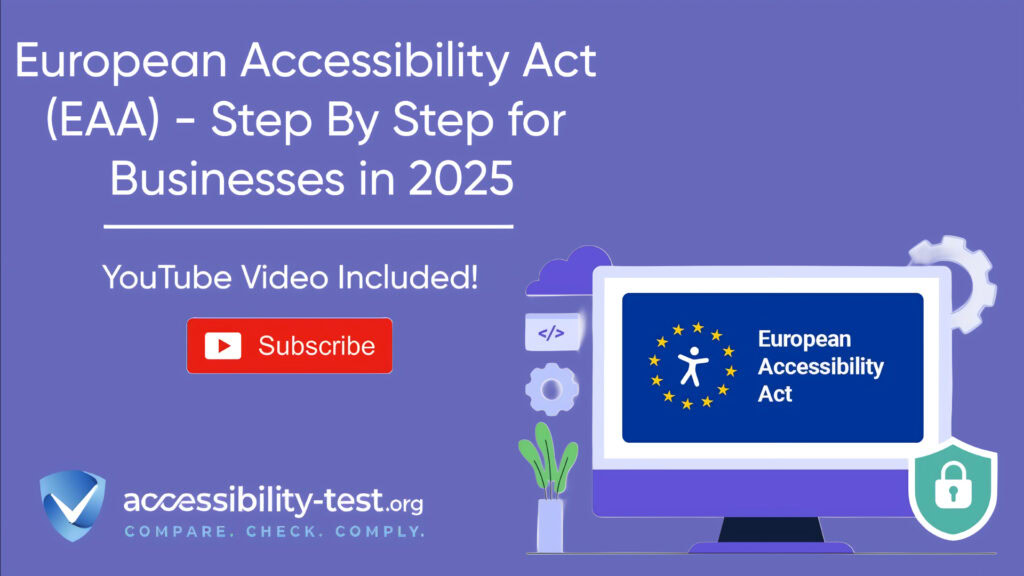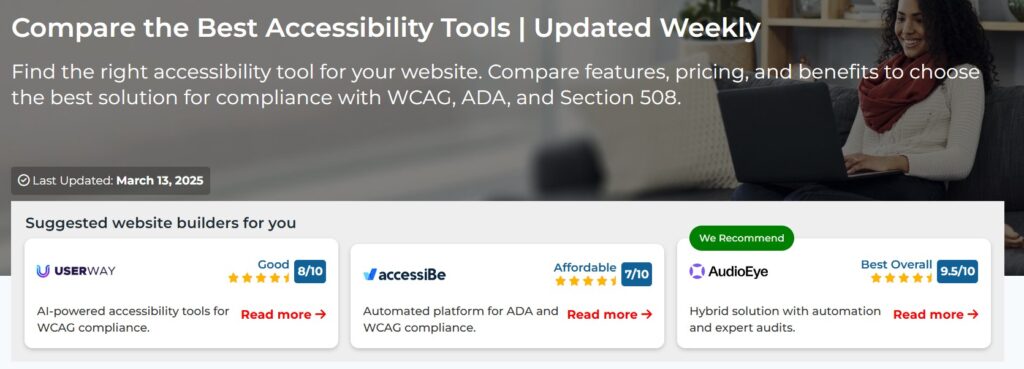
European Accessibility Act (EAA)
The European Accessibility Act (EAA) will change how businesses make their websites, apps, and services available to everyone by June 28, 2025. This law affects many companies selling to EU customers, even if the business itself is located outside Europe. With fines up to €500,000 in some countries, businesses need to act now to get ready.
What Is the EAA? Key Objectives and Scope
The European Accessibility Act is an EU law passed in 2019 that sets clear rules for making products and services easier to use for people with disabilities. The EAA creates one set of rules across all EU countries, which helps businesses know exactly what they need to do, no matter which European country their customers live in.
The main goal of the EAA is simple: make sure the 135 million Europeans with disabilities can use the same products and services as everyone else. This includes websites, mobile apps, banking services, e-books, and transportation systems.
The EAA applies to most businesses that:
- Sell products or services to customers in EU countries
- Have more than 10 employees
- Make more than €2 million in yearly sales
Small businesses with fewer than 10 workers or less than €2 million in yearly sales don’t have to follow these rules. But even smaller businesses might want to make their websites and products more accessible to reach more customers.
Unlike older laws that only covered government websites, the EAA applies to private businesses too. This means online stores, banks, travel companies, and many other businesses need to make changes to meet the new rules.
Industries Affected (e-commerce, banking, transportation)
The EAA affects many different types of businesses. Here’s what companies in various industries need to know:
E-commerce businesses:
- All online stores selling to EU customers must make their websites accessible
- Product information, shopping carts, and checkout pages must work with screen readers and other tools
- Customer service options need to be accessible to people with all types of disabilities
- All steps from browsing products to completing a purchase must be usable by everyone
Banking services:
- Online banking websites and apps must be accessible
- ATMs need features like voice guidance and tactile markers
- Banking statements must be available in formats that work with screen readers
- Customer service must be available through different communication methods
Transportation services:
- Ticket booking websites for trains, buses, and flights must be accessible
- Self-service ticket machines need accessible interfaces
- Travel information must be available in different formats
- Mobile apps for transportation services must work with assistive technology
Other affected businesses include:
- Telecommunications companies (phones, internet services)
- TV and media streaming services
- E-book providers and e-readers
- Computer and smartphone manufacturers
- Customer service call centers
The EAA aims to create a more equal marketplace where all customers can access the same products and services, regardless of disability. Businesses in these industries will need to make significant changes to how they design their digital products and services before the 2025 deadline.
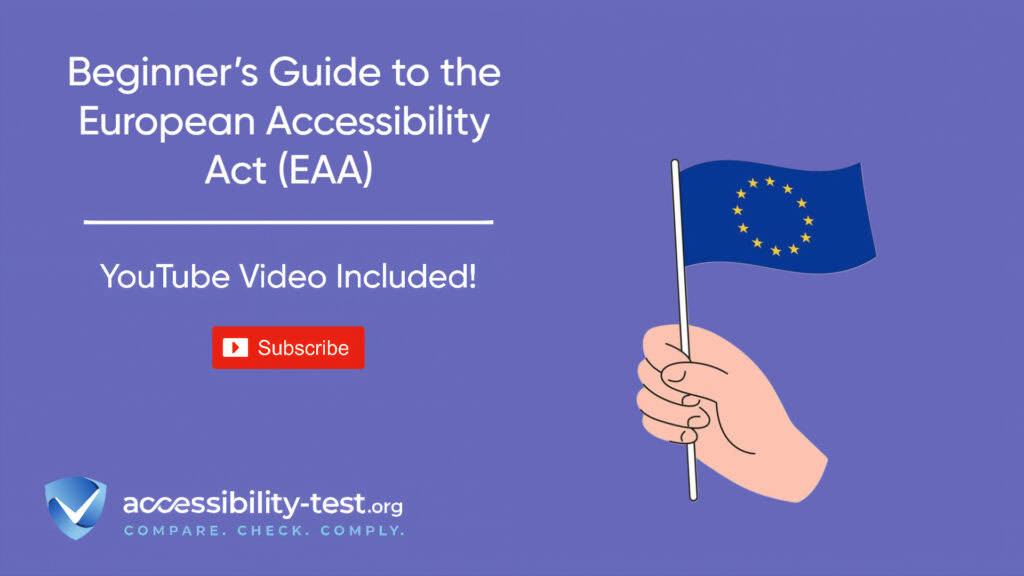
Mandatory Compliance Statements & Monitoring Requirements
Under the EAA, businesses must be clear about how accessible their products and services are. This means creating and sharing detailed information about:
- How products and services meet accessibility standards
- Any areas where full accessibility hasn’t been achieved
- Alternative options for customers with disabilities when complete accessibility isn’t possible
- Contact information for reporting accessibility problems
Each EU country will have government agencies checking if businesses follow the rules. These agencies will:
- Review accessibility statements
- Investigate customer complaints
- Request proof that products and services meet the standards
- Conduct random checks of websites and digital services
Businesses must keep detailed records showing what they’ve done to check and improve accessibility. This includes:
- Reports from accessibility testing
- Documentation of accessibility features
- Records of customer feedback about accessibility
- Plans for fixing any accessibility problems
Companies must also train customer service staff to help people with disabilities use their products and services effectively. This training should cover different types of disabilities and how to provide helpful assistance without being condescending.
The monitoring system is designed to make sure businesses don’t just claim they’re accessible but actually make the necessary changes. By requiring both public statements and documentation, the EAA creates accountability and helps customers know what to expect from different companies.
Compliance Timeline and Penalties for Non-Compliance (€250k fines)
The EAA has a clear timeline that businesses need to follow:
- June 2022: EU countries were required to add the EAA to their national laws
- June 28, 2025: Final deadline for businesses to make their products and services accessible
- After June 2025: Full enforcement begins across all EU countries
Many EU countries missed the 2022 deadline for creating their national laws, which has given businesses less time to prepare. This makes it even more important to start working on accessibility now rather than waiting until the last minute.
The penalties for not following the EAA can be severe and vary from country to country:
- Germany: Fines up to €500,000
- France: Fines between €5,000 and €250,000
- Spain: Fines from €5,000 to €300,000
- Netherlands: Expected fines up to €250,000
- Italy: Penalties ranging from €5,000 to €150,000
- Ireland: Fines up to €200,000 with mandatory audits
Besides fines, businesses that don’t comply might face:
- Public naming of companies that break the rules
- Requirements to fix accessibility problems within specific timeframes
- Loss of ability to bid on government contracts
- Mandatory accessibility audits at the company’s expense
- Legal cases from customers who can’t access services
Some countries may even add penalties like temporary business suspensions for serious or repeated violations. These strict consequences show how seriously the EU takes digital accessibility.
The financial risk of ignoring the EAA is substantial, especially for larger businesses operating across multiple EU countries. A company could potentially face separate fines in each country where it fails to meet the requirements.
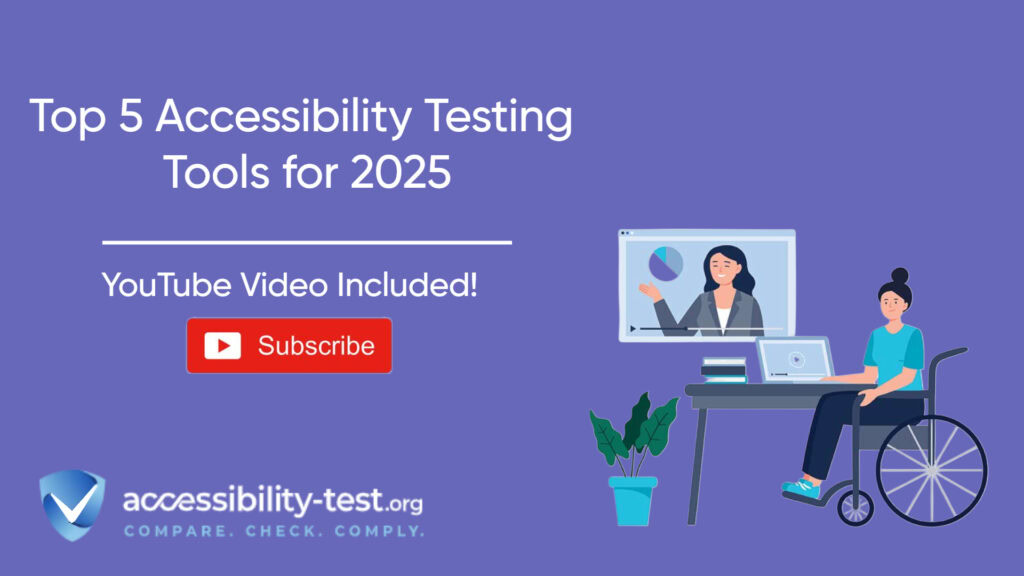
How to Prepare for EAA Compliance
Getting ready for the EAA deadline doesn’t have to be overwhelming if you start now and follow these steps:
1. Check your current accessibility
Start by finding out how accessible your websites, apps, and services are right now. You can:
- Use automated testing tools to scan your website for basic problems
- Hire experts to do a more thorough review
- Test your digital products with people who use screen readers and other assistive technology
- Review customer feedback about accessibility challenges
This first step will show you exactly what needs to be fixed before the 2025 deadline.
2. Create an action plan
Once you know what needs to be improved, make a clear plan that includes:
- A list of all accessibility issues, sorted by how serious they are
- Specific changes needed for each product or service
- Who will be responsible for making each change
- Deadlines for completing different parts of the work
- Budget for accessibility improvements
Your plan should focus on fixing the most serious barriers first while working toward full compliance by June 2025.
3. Update your digital platforms
Make the necessary changes to your websites, apps, and other digital services:
- Add text descriptions for all images
- Make sure forms and buttons work with keyboard navigation
- Create captions and transcripts for videos
- Make sure color contrast is strong enough
- Design websites that work well with screen readers
- Test all features with different assistive technologies
Remember that accessibility isn’t just about technical changes—it’s about creating an easy experience for all users.
4. Train your team
Everyone in your company should understand the importance of accessibility:
- Train developers and designers on creating accessible products
- Teach content creators how to write accessible content
- Help customer service staff learn how to assist people with different disabilities
- Make accessibility part of your company’s regular processes
Ongoing training will help make accessibility a natural part of how your business works.
5. Create accessibility documentation
Prepare the documents required by the EAA:
- Write clear accessibility statements for each product and service
- Document the testing you’ve done
- Keep records of accessibility features
- Create plans for addressing any remaining issues
- Make sure these documents are easy to find on your website
Good documentation not only helps with compliance but also shows customers your commitment to accessibility.
6. Test with real users
The best way to know if your changes actually work is to test with people who have disabilities:
- Invite people who use screen readers to try your website
- Ask people with motor disabilities to navigate your app
- Get feedback from users with cognitive disabilities about how clear your content is
- Use this feedback to make further improvements
Real user testing often reveals issues that automated tools miss.
7. Stay informed about updates
The specific requirements might change as countries implement the EAA:
- Follow news about how different EU countries are applying the rules
- Join industry groups focused on accessibility
- Attend webinars and training about the EAA
- Connect with accessibility experts who can keep you updated
Staying informed will help you adapt to any changes in requirements before the deadline.
8. Implement ongoing monitoring
Accessibility isn’t a one-time fix. Set up systems to:
- Regularly check new content and features for accessibility
- Review customer feedback about accessibility
- Test major updates with assistive technologies
- Keep improving based on user experiences
This ongoing attention will help maintain compliance even as your products and services evolve.
By taking these steps now, you’ll be in a much better position when the June 2025 deadline arrives. Starting early gives you time to spread out the work and costs while ensuring you don’t face penalties when enforcement begins.
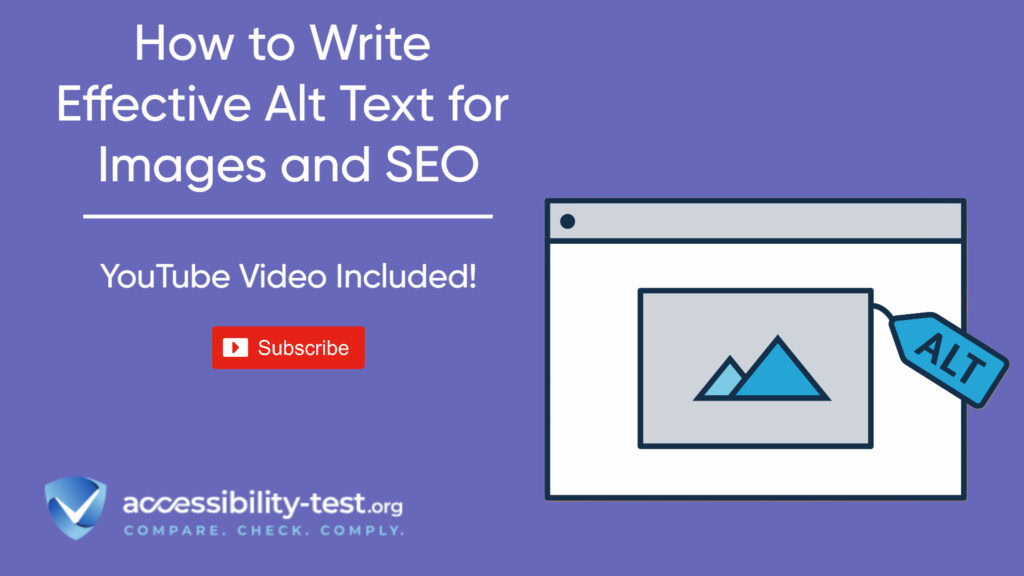
Tools and Resources for EAA Compliance
Many tools and resources can help your business meet EAA requirements without starting from scratch:
Accessibility testing tools:
- WAVE: A web accessibility evaluation tool that highlights accessibility issues directly on your web page
- Axe: Browser extension that finds accessibility problems in web content
- Lighthouse: Google’s automated tool that checks web pages for accessibility issues
- Color contrast analyzers: Tools that check if text is easy to read against background colors
- Screen readers: Software like NVDA or VoiceOver that reads web content aloud
These tools can quickly find common problems, though they should be used alongside human testing for best results.
Standards and guidelines:
- Web Content Accessibility Guidelines (WCAG) 2.1 Level AA: The technical standard referenced by the EAA
- EN 301 549: Europe’s harmonized accessibility standard
- Country-specific implementation guidelines as they become available
Understanding these standards helps you know exactly what changes you need to make to comply with the EAA.
Expert help options:
- Accessibility consultants: Professionals who specialize in making websites and apps accessible
- Legal advisors familiar with EU accessibility laws
- User experience designers who understand inclusive design
- Developers with accessibility expertise
Many businesses find that working with experts saves time and ensures they don’t miss important requirements.
Training resources:
- Online courses about web accessibility
- Webinars specific to EAA compliance
- Industry conferences focusing on digital accessibility
- Accessibility certification programs for team members
Investing in training helps build in-house expertise that can maintain accessibility over time.
Free tools from Accessibility-Test.org:
- Website scanning tools that check for common accessibility issues
- Checklists for different types of digital content
- Guides to fixing specific accessibility problems
- Resources for testing with assistive technologies
These resources can help you get started even before investing in paid solutions.
Run a FREE scan to check compliance and get recommendations to reduce risks of lawsuits.
The Business Benefits of EAA Compliance
While meeting EAA requirements may seem like just another regulatory burden, making your products and services accessible actually offers significant business advantages:
Reach more customers
There are 135 million people with disabilities in the EU alone. Making your products accessible opens your business to this large market that competitors might be ignoring. People with disabilities have substantial spending power—estimated at over €200 billion annually in Europe.
Improve user experience for everyone
Changes that help people with disabilities often make products better for all users. For example:
- Clear, simple language helps everyone understand your content
- Good color contrast makes reading easier in bright sunlight
- Video captions help people who are in noisy environments
- Well-organized websites make information easier to find for everyone
These improvements can lead to higher customer satisfaction across your entire customer base.
Build a stronger brand reputation
Companies that prioritize accessibility are increasingly seen as more socially responsible. This can:
- Improve how customers view your brand
- Help attract and retain talented employees
- Create positive media coverage
- Differentiate your business from competitors
In a competitive market, this positive reputation can be a valuable asset.
Reduce legal risks
Beyond avoiding EAA fines, accessibility improvements can help prevent other legal issues:
- Reduce the risk of discrimination lawsuits
- Help comply with other accessibility laws around the world
- Show good faith efforts to serve all customers equally
- Create documentation that can help defend against future claims
This risk reduction has real financial value for businesses operating in multiple countries.
Drive innovation
Working on accessibility often leads to creative solutions that benefit products in unexpected ways:
- Voice control features originally designed for people with motor disabilities now power smart speakers
- Text-to-speech technology helps busy people “read” content while multitasking
- Simple interfaces designed for cognitive accessibility often lead to more intuitive products
This connection between accessibility and innovation can give businesses a competitive edge.
Improve website performance
Many accessibility improvements also make websites work better technically:
- Adding proper HTML structure helps with search engine optimization
- Reducing reliance on heavy scripts makes sites load faster
- Creating mobile-friendly designs improves the experience on all devices
- Well-structured content is easier to update and maintain
These technical benefits can reduce costs and improve website performance metrics.
By viewing EAA compliance as an opportunity rather than just a requirement, businesses can gain advantages that go far beyond avoiding penalties. The investment in accessibility often pays off through expanded markets, improved products, and stronger customer relationships.
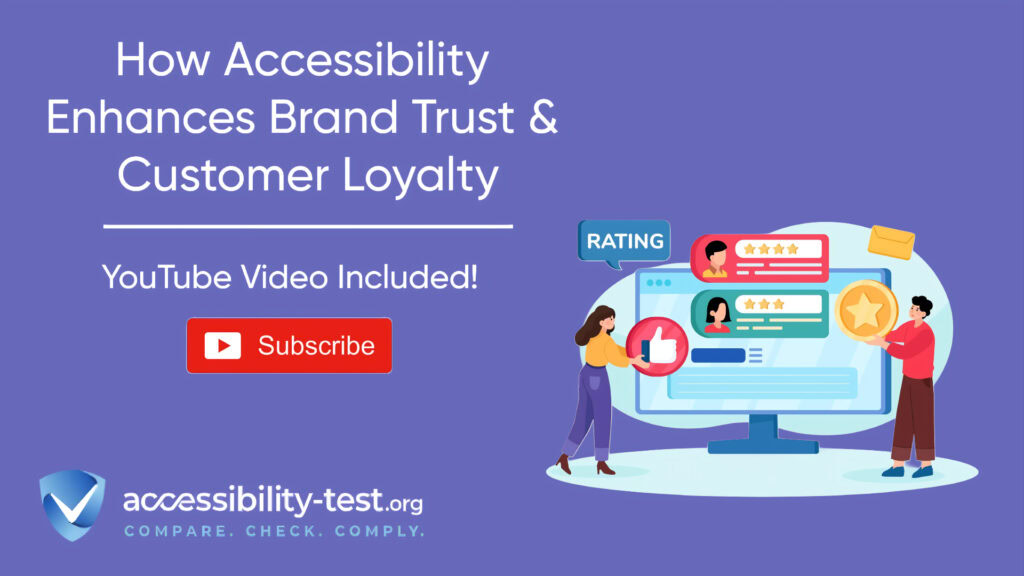
EAA Implementation Across EU Countries
Each EU country is creating its own version of the EAA law, which means there may be some differences in how the rules are applied and enforced:
Different approaches to enforcement
While the basic requirements are the same across the EU, countries are taking different approaches to checking compliance and punishing violations:
- Some countries plan to use random website testing to find non-compliant businesses
- Others will rely more on customer complaints to identify problems
- Some have created new government agencies specifically for EAA enforcement
- Others are expanding the role of existing consumer protection agencies
This means businesses operating across multiple EU countries may need to adapt to different enforcement approaches.
Varying deadlines for existing products
While June 28, 2025 is the main deadline, some countries are adding extra time for:
- Self-service terminals (like ATMs and ticket machines) that were installed before June 2025
- Existing contracts that were signed before the EAA came into effect
- Certain types of complex products that need more time for redesign
Businesses should check the specific rules in each country where they operate to see if any extensions apply to their products.
Additional requirements in some countries
Some EU countries are adding extra accessibility requirements beyond what the EAA requires:
- More detailed documentation requirements
- Additional categories of products that must be accessible
- Stricter standards for certain types of businesses
- More specific technical requirements
Businesses should be aware that meeting the basic EAA requirements might not be enough in every EU country.
Different approaches to small business exemptions
While the EAA generally exempts businesses with fewer than 10 employees and less than €2 million in annual turnover, some countries are:
- Creating partial exemptions that still require some accessibility features
- Offering support programs to help small businesses implement accessibility
- Phasing in requirements for small businesses over a longer period
- Requiring small businesses to explain why meeting requirements would be an “undue burden”
Small businesses operating in multiple EU countries should check the specific rules in each location.
Monitoring and reporting variations
Different countries have different approaches to how businesses must:
- Report on their accessibility status
- Respond to customer complaints
- Document their compliance efforts
- Update their accessibility information
These variations can make compliance more complex for businesses with customers across multiple EU countries.
To navigate these differences, many businesses are:
- Working with legal experts familiar with each country’s implementation
- Building accessibility programs that meet the strictest requirements across all countries
- Creating country-specific compliance documentation where needed
- Developing flexible approaches that can adapt to changing requirements
This complexity is another reason to start preparing for EAA compliance well before the June 2025 deadline.
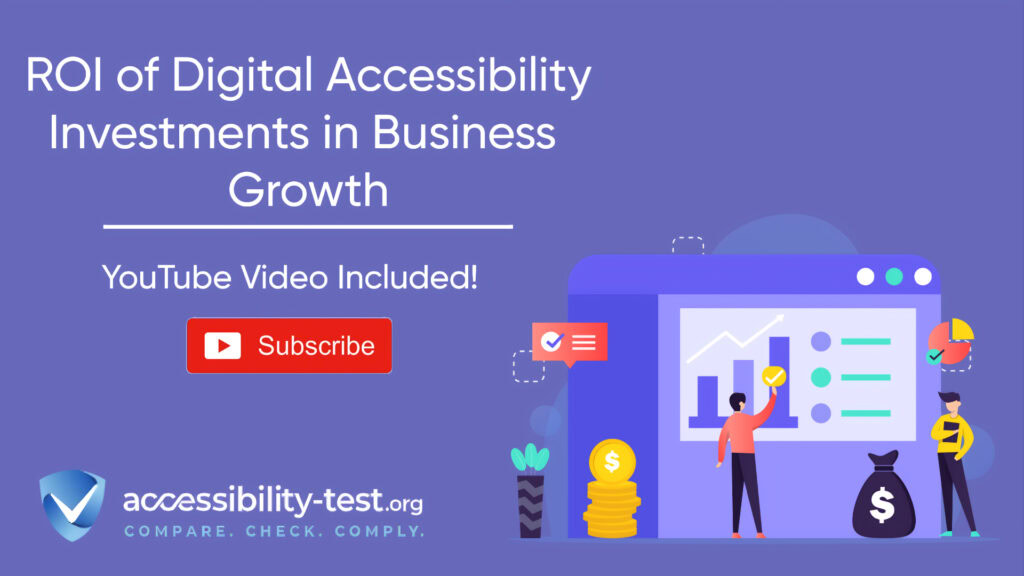
How to Start Your EAA Journey Today
With less than a year until the European Accessibility Act takes full effect, businesses need to begin working toward compliance immediately. Here are practical first steps you can take this week:
1. Assess your current situation
Before making changes, understand where you stand:
- Run our free accessibility scan on your website
- Make a list of all digital products that will need to comply
- Check if your business qualifies for any exemptions
- Identify which EU countries you serve customers in
- Determine which team members will lead your accessibility efforts
This initial assessment will help you understand the scope of work ahead.
2. Learn the basics of digital accessibility
You don’t need to become an expert overnight, but understanding key concepts will help:
- Familiarize yourself with common accessibility barriers
- Learn about different types of disabilities and assistive technologies
- Understand the basic principles of the Web Content Accessibility Guidelines (WCAG)
- Review examples of accessible and inaccessible digital experiences
This knowledge will help you make informed decisions as you move forward.
3. Get leadership buy-in
Make sure company leaders understand both the legal requirements and business benefits:
- Present the potential costs of non-compliance (fines and legal risks)
- Highlight the business opportunities (larger market, better user experience)
- Discuss how accessibility aligns with company values
- Propose a realistic budget for becoming compliant
- Set clear expectations about the time and resources needed
Strong support from leadership makes the compliance process much smoother.
4. Build accessibility into your processes
Start integrating accessibility into your normal business operations:
- Add accessibility checkpoints to your content creation workflow
- Include accessibility requirements in new development projects
- Make accessibility part of your quality assurance testing
- Consider accessibility when purchasing new software or services
- Include accessibility goals in team performance metrics
These process changes help prevent new accessibility barriers from being created.
5. Prioritize quick wins
While full compliance may take time, you can make immediate improvements:
- Add alt text to images on your most visited web pages
- Fix obvious contrast issues in text
- Ensure forms have proper labels
- Make sure videos have captions
- Check that your website can be navigated using only a keyboard
These changes can significantly improve accessibility without major redesigns.
6. Create a compliance roadmap
Develop a realistic timeline for achieving full compliance:
- Break the work into manageable phases
- Set milestones with clear deadlines
- Assign specific responsibilities to team members
- Identify resources needed for each phase
- Build in time for testing and revisions
A well-planned roadmap makes the process less overwhelming and helps track progress.
7. Consider getting expert help
For many businesses, working with specialists is the most efficient approach:
- Consult with accessibility experts to guide your strategy
- Hire developers with accessibility experience for technical changes
- Work with designers who understand inclusive design principles
- Partner with testing services that include people with disabilities
Outside expertise can save time and help avoid costly mistakes.
Run a FREE scan to check compliance and get recommendations to reduce risks of lawsuits.
Using Automated Tools for Quick Insights (Accessibility-Test.org Scanner)
Automated testing tools provide a fast way to identify many common accessibility issues. They can quickly scan your website and point out problems that might be difficult for people with disabilities to overcome.
Visit Our Tools Comparison Page!

Next Steps | Taking Action Today
Now that you understand the importance of website accessibility and how to approach it, it’s time to take action. Here are some concrete steps you can take today:
- Run a free accessibility scan – Use the Accessibility-Test.org scanner to get a quick assessment of your website’s current state.
- Fix the easy issues first – Address simple problems like missing alt text and color contrast to make immediate improvements.
- Create an accessibility statement – Add a page to your website explaining your commitment to accessibility and how users can report problems.
- Train key team members – Ensure that content creators and developers understand basic accessibility principles.
- Budget for accessibility – Include accessibility in your website maintenance and development budgets.
Remember, every step you take toward better accessibility reduces your legal risk and improves the experience for all your users.
Run a FREE scan to check compliance and get recommendations to reduce risks of lawsuits
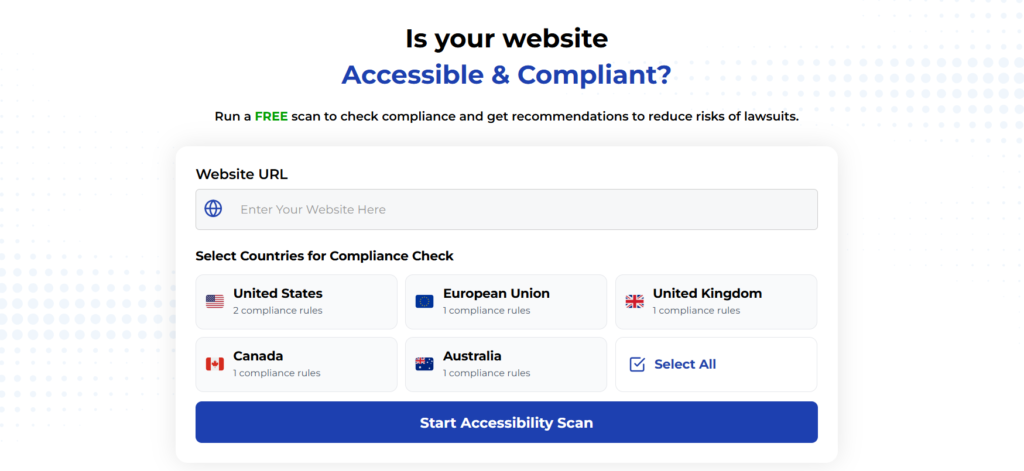
TThe European Accessibility Act represents a major step toward making digital products and services available to everyone, regardless of disability. For businesses, the June 2025 deadline is approaching quickly, bringing both challenges and opportunities.
While the potential fines of up to €500,000 make compliance necessary from a legal standpoint, the business benefits go far beyond avoiding penalties. Making your products and services accessible opens your business to millions of new potential customers, improves the experience for all users, and can drive innovation in unexpected ways.
Every business serving EU customers should start their accessibility journey now rather than waiting until the last minute. The steps outlined in this article provide a practical starting point, from assessing your current status to building accessibility into your ongoing processes.
Remember that digital accessibility is not just about checking boxes for compliance—it’s about creating products and services that everyone can use. By embracing the spirit of the EAA rather than just meeting minimum requirements, your business can build stronger relationships with all customers while contributing to a more inclusive digital world.
Begin your EAA compliance journey today with our free website accessibility scan. This simple step will help you understand where you stand and what you need to do before the 2025 deadline arrives.
Run a FREE scan to check compliance and get recommendations to reduce risks of lawsuits.



